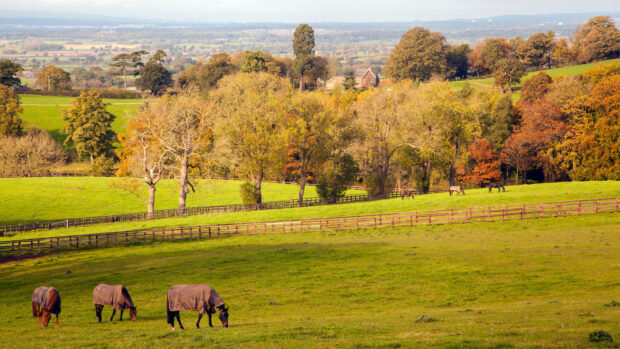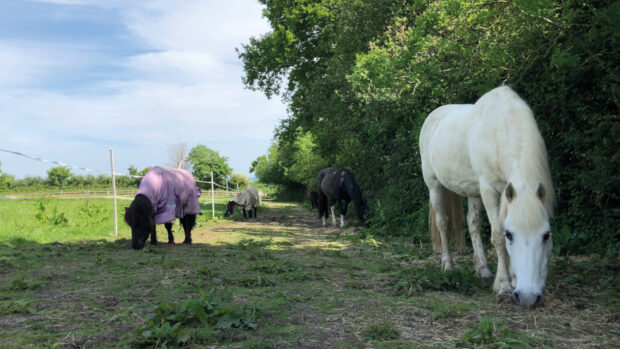The headline “Breeder convicted of cruelty in horse welfare case” conjures up horrible images. When you read that “bodily condition of the horses was dreadful…” you will invariably imagine emaciated horses in a terrible state of starvation or disease. But what if you turn the page and discover that the pictures show obese native ponies, rolling in fat and looking like glossy equine puddings?
Of course, there has not, to my knowledge, been a case of prosecution for obesity, but I wonder whether the welfare of ponies that are far too fat is just as compromised as that of the thin ones. How many passers-by would secretly report a field of dangerously obese ponies to the welfare authorities?
Obesity is a popular target of healthcare professionals in human medicine; even in small animal practice, slimming clinics for dogs and cats are remarkably popular and are
testimony to veterinary concern about being grossly overweight. But the point is obvious: in both humans and animals obesity is not healthy. Why is it then that in some equine circles pathological obesity is encouraged and even promoted?
Although many judges, breeders and owners of show ponies will hold up their hands in horror and exclaim: “Not in our classes!”, the truth is that many of the ponies that regularly head the show lines are overweight. I have discussed this with show pony clients over many years and all of the responsible ones, both judges and competitors, will admit that it is a problem. We know that it is a problem because many of these ponies live for season after season on the brink of laminitis.
Of all our clients, the show pony folk are the best at feeling for digital pulses, noting slight changes in the stance of the ponies, looking for signs of trouble in the feet. Why are they so good at it? Because they have so much experience of the disease.
When this is discussed in public, the usual defence is that true show condition requires a pony to be fit, well muscled and in “peak condition”. The trouble is that, for many, “peak condition” means simply overweight. Judges and competitors strive for the perfect outline, particularly the perfect topline, and in many ponies the only way to achieve the full, rounded quarters, loins and croup is to pile on the fat.
This is not true of all ponies, but it certainly applies to a large number and gives rise to epidemics of laminitis. In contrast to the welfare problems that arise when horses get too thin, laminitis is often not reversible. Thin horses can usually be fed and returned to normality: fat, laminitic ponies may be dieted, but they end up as lean, laminitic ponies with permanent changes in their feet. The incidence of Cushings disease is also higher in fat ponies and there is some evidence that at least one form of the disease is linked to obesity.
Rather perversely, show pony clients are often among the most caring in terms of general equine welfare. They pay fastidious attention to almost every aspect of the husbandry of their charges, but, because the received wisdom or current fashion requires it, they push the ponies to the very limit of bodily condition and beyond. When there is a hint of laminitis or when young joints blow up or a splint appears because they are carrying too much weight, these clients are the first to call in veterinary attention and are genuinely concerned. If the subject of condition or over-condition is raised, there is usually a heartfelt sigh and despairing question: ”I know, but what can we do? It’s what’s necessary to win.”
No doubt there will be vigorous defence of the standards of the show pony rings and I am sure that many judges will declare that they are not impressed by obesity, but by proper condition, movement and presence.
This may be true in theory, but in practice I have been depressed by the condition of many of the winning ponies I have seen in recent years. They are fabulous animals, with excellent conformation and exceptional movement. The emphasis on temperament in the smaller classes has improved the standards considerably, but all these ponies would be just as impressive and move just as well, perhaps better, if they carried less weight.
They are descended from native breeds or bred down from small blood horses; the former had evolved to live in adverse conditions on poor forage, the latter were naturally lean and athletic. At which point did we come to believe that bulk was desirable and that an overweight pony should win a class for beauty?
How do we address the problem? I am not sure, but I know that in all areas of animal showing such welfare problems may arise. Extremes of desirable conformation lead to pathological problems, whether in ponies or Bulldogs, Burmese cats or fancy fowl. When such problems are recognised, it takes determination, co-ordination and co-operation on the part of breeders, judges and competitors to put it right.


